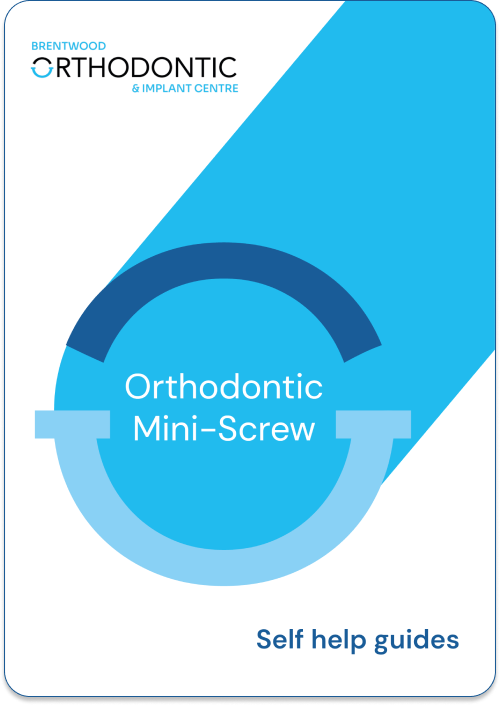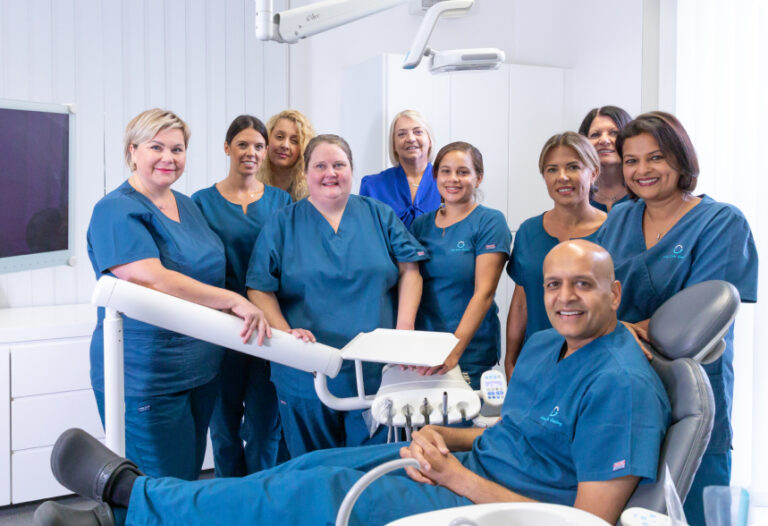Live Life Smiling
Helping to anchor poorly positioned teeth
Are you are thinking about having orthodontic treatment as an adult? You might have some questions you would like to ask your orthodontist.
What is an orthodontic mini-screw?
It is a small metal screw which is inserted through the gum into the jaw bone to act as an anchor to help move poorly positioned teeth. Some people also call them micro-screws, mini-implants or temporary anchorage devices (TADs).
Why do I need to have a mini-screw?
In order to move poorly positioned teeth, the other surrounding teeth usually provide a stable support for the force applied by the brace. It is not always possible to use these teeth and sometimes the force may cause the wrong teeth to move. In such cases, a mini-screw can be used to act as an ‘anchor’ to help with straightening your teeth and closing up gaps.
How will a mini-screw be placed?
- A mini-screw can be placed at any time during your brace treatment.
- Local anaesthetic is used to numb the gum. You may also be asked to use an anti-bacterial mouthwash.
- A hole may be drilled into the jaw first to insert the screw or it may be gently inserted directly into the bone.
- You may experience an odd pressure sensation as the screw is inserted.
- Sometimes a plastic device is used as a guide to help place the screw in exactly the right position.
A brace can be attached to the mini-screw either straight away or at a later visit in order to start tooth movement.
How will a mini-screw be placed?
- A mini-screw can be placed at any time during your brace treatment.
- Local anaesthetic is used to numb the gum. You may also be asked to use an anti-bacterial mouthwash.
- A hole may be drilled into the jaw first to insert the screw or it may be gently inserted directly into the bone.
- You may experience an odd pressure sensation as the screw is inserted.
- Sometimes a plastic device is used as a guide to help place the screw in exactly the right position.
A brace can be attached to the mini-screw either straight away or at a later visit in order to start tooth movement.
What are the risks?
There is limited evidence about how well mini-screws work but there are no major safety worries about using them. Success rates are greater than 80%. The mini-screw is usually placed so that it goes between the roots of two teeth. The majority remain stable during brace treatment.

Possible risks are;
- the screw may touch a tooth root during placement. The root should heal with no problems,
- the screw becomes loose. It can usually be replaced in the same position at a later visit or in a different position,
- 5% of screws break during insertion. If this happens, the end of the mini-screw may be left in the bone,
- this should not cause any problems.15-20% of mini-screws fail early and need to be replaced or removed,
- infection – very unlikely to happen if you keep the area clean as advised.
What if I do not want a mini-screw placed in my mouth?
Your orthodontist will explain the various ways to straighten your teeth and close up spaces. Mini-screws are often used to make your brace treatment as efficient and effective as possible. Alternative options may involve wearing headgear, the extraction of a tooth or accepting spaces between teeth. Your orthodontist will advise you on the best way to get the result you want. The final decision is yours.
Where can I get more information?
The National Institute for Health and Clinical Excellence (NIHCE) has produced information on this procedure for patients. It is available from: https://www.nice.org.uk/guidance/ipg238.
If you have any further questions, please ask your orthodontist. It is important that you fully understand what is involved in having orthodontic treatment with mini-screws before you decide to proceed.
How long will the mini-screw be in my mouth?
The mini-screw is usually in place for several months whilst the teeth are being moved into a better position. Once tooth movement is complete, the screws are taken out.
How is the mini-screw removed?
Very simply. No local anaesthetic is usually required. The gum and bone underneath will heal up completely within a few days with no discomfort.

